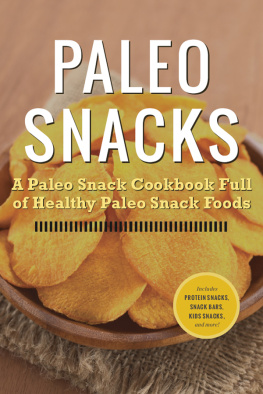
Summertime, and the Paleo living is easyer. Or at least to us that seems to be the case! Lets think about it: during the summer in most parts of the United States you have access to an abundance of farm-fresh veggies and fruits in season. Your local farmers markets are in full swing, with an amazing variety of produce, and very often the markets have copious amounts of locally raised pork, beef and chicken. Chances are you and the family are enjoying the long days of summer and taking some road trips and spending additional time outdoors, which we all know is a lot closer to the way our Paleolithic ancestors lived than is sitting inside or at a desk all day!
With so much to love about summer, its always hard to see it end. Youre likely gearing up for that last road trip, preparing for the official end of summer Labor Day picnic, trying to figure out how to preserve your summer garden or farmers markets bounties, or maybe you just want to feed your family really well before school is back in session. In this guide, well help you make the most of these last days of summer with tips and tricks that make the most of your summertime bounty, ideas for staying well fed on the road and while out and about, and, best of all, delicious, healthy recipes that are sure to impress and delight even your non-Paleo friends at those late summer gatherings. Enjoy!
Happy eating,
Julie & Charles

Before we go any further, lets talk about seasonality. In todays day and age, when you can get just about every fruit and vegetable year-round (even if its shipped from halfway around the world), its hard to know whats actually in season and what isnt. Supermarkets make it hard to determine which produce is truly seasonal. For example, the fact that you can buy vine-ripened tomatoes year-round makes it challenging to decipher when they are truly in season. Fortunately, a simple Google search will help you easily identify whats technically in season in your particular region. Epicurious has a very handy chart that lists what is in peak season based on the month and the state. Field to Plate provides a list of websites with information on whats seasonal in every state. Oftentimes your supermarket will have special deals on in-season produce, and more and more supermarkets are sourcing locally, which is music to our ears!
One of the easiest ways to find out what is in season is to stroll through any of your local farmers markets. Walk around one of the over seven thousand .
With so much available locally and in such abundance (except where drought conditions persist), youre likely to find a much better price on seasonal items. Those gorgeous heirloom tomatoes that cost a small fortune out of season wont strain your wallet in season. Not only is the price point better, but the fact that local produce is fresher, tastier and that buying local and seasonal helps support local farms and farmers gives you more than enough reason to stock up and eat up!
Of course, if you planted your own garden, no doubt you are aware of whats in season by whats ripe and ready to be picked. The end of summer is the perfect time to harvest the lions share of your produce and either eat it or put it up for the winter. More on putting up in a minute!
Farmers markets are, of course, wonderful for produce, but they are also places where you are likely to have access to locally and humanely raised pork, beef and poultry. As many farmers markets arent open year-round, summer is the perfect time to stock up the freezer for the winter. Take advantage of this time to meet the farmers in person and get to know them. Ask questions about their farming practices, and perhaps most importantly, thank them for raising their animals the right way! Theres something incredibly special about thanking and shaking the hand of the person who cared for and raised the cow that provides you and your family with tasty eats. Ask your local farmers what they might have available in the fall. If the cost of locally sourced protein is a challenge in your household, maybe talk to your farmer and see if there is any work you can do on the farm in exchange for quality meat.
MAKING THE MOST
OF WHATS IN SEASON
Have you ever been to a Fourth of July barbecue to which someone brought a pumpkin pie? We didnt think so. Pumpkins arent in season in the summer, and it doesnt make much sense to have those fall flavors on the table in the summertime. With so many delicious fruits and vegetables available during the summer, why not take advantage of it all! Plan your meals and menus in concert with whats in season and accessible to you. Peruse the local farmers markets for recipe ideas. At one of our local farmers markets, restaurant chefs from around the city do free cooking demonstrations using produce from the various farms and oftentimes hand out recipes. Its an excellent source of inspiration! Pack snacks for work or for your kids to take to the pool that reflect whats in season. Keep your refrigerator stocked with chopped vegetables and fruit for easy snacking. If you have your own garden, have the kids help you pick things. The odds are if they see how something has grown, they may be more apt to eat it! Dont have a garden of your own? Find local U-pick farms, like those featured on PickYourOwn.org , and let your kids pick their own fruits and vegetables. Not only is it a great way to see some local farms, but its also a great way to show your kids the importance of local agriculture.
PUTTING UP
When the mercury is down in those single digits, the fire is roaring, and theres a chance of snow in the forecast, odds are that the furthest things from your mind are the fresh veggies of summer. However, with a little advanced planning, you can savor more of those summertime flavors year-round, adding greater variety to your everyday meals throughout the fall and winter.
There are several ways to preserve the fruits, veggies and herbs of summer so you can enjoy the those flavors six, eight or ten months after the pool closed and the garden became dormant. Drying, canning and freezing are the main methods we use. Lets talk a bit about each.
FREEZING
While yes, the freezer is great for storing leftovers or extra meat, its also perfect for preserving fruits and vegetables. Think about the veggies and fruits available in the freezer aisle of your grocery store and consider all the things you can freeze and store yourself. Peppers, onions, cauliflower, spinach, kale, broccoli, carrots, green beans, squash, berries and peaches are just some of the vegetables and fruits youre apt to find in the freezer aisle. How do you go about freezing your own?
- Prepare your fruits and vegetables. Cut cauliflower and broccoli into small florets. Cut your peppers into long strips or small pieces. Remove the stems from kale and strawberries. Pit the stone fruit (peaches, plums, nectarines, apricots). Cut the squash into rounds or other smaller-size pieces. Youll want to be sure youve washed everything first!
- For most vegetables, blanchingboiling or steaming the veggies for a short period of time, then submerging them in an ice-water bath to stop the cookingis essential. Blanching destroys the enzymes that affect the color, texture and nutritional value of the veggies. So this is a rather critical step when freezing. To blanch, bring a large pot of water to a boil. Have a large bowl or pot filled with ice water ready in the sink. Add your vegetables to the boiling water. The cooking time depends on which vegetables you are preparing (many county extension websites and even cookbooks, such as The Joy of Cooking, provide cooking times for different vegetables when blanching). Using a slotted spoon, remove the vegetables from the boiling water and submerge them in the ice-water bath. Once they are cool, drain the vegetables and dry them thoroughly. Fruit does not typically need blanching.
Next page













